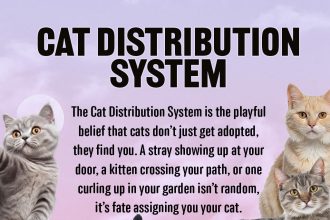Some people are just hard to read. One moment they seem present, engaged, even sweet… and the next, they pull away like nothing happened. Conversations get shorter. Replies slow down. Emotional topics make them vanish into thin air.
It wears you down. Not because you need constant attention, but because the inconsistency leaves you wondering where you stand or what you supposedly did wrong, even when you did nothing at all.
Before you walk away for good, it helps to understand what’s happening beneath their surface and how to communicate in a way that doesn’t drain you.
The Dismissive-Avoidant Attachment Style
A dismissive avoidant needs independence above everything else. Closeness feels risky, emotional needs feel uncomfortable, and vulnerability often triggers withdrawal.
This is not about not caring. It’s about not knowing how to stay connected without feeling exposed.
Most dismissive avoidants learned early in life that expressing needs was pointless or unsafe. So they grew up relying on themselves, staying emotionally guarded, and keeping others at arm’s length when things get too intimate.
Because of this, they may come across as:
- distant
- uninterested
- emotionally flat
- unpredictable
- hard to build intimacy with
Partners often end up feeling rejected, undervalued, or invisible, even when the dismissive avoidant does care on some level.
Imagine someone brings up feelings, and instead of responding to the emotion, the avoidant changes the subject, cracks a joke, or goes silent. It’s not necessarily cruelty or discomfort. It’s their way of dodging emotional pressure.
The real question is: can the relationship function with this dynamic? Sometimes yes, but only with awareness, patience, and balance.
How To Text a Dismissive Avoidant (Without Exhausting Yourself)
Texting an avoidant isn’t about manipulation. It’s about communicating in a way that reduces pressure for them… and preserves your energy at the same time.
Keep messages short and low-pressure
Avoidants don’t like feeling cornered or pressured into long emotional conversations. When they receive a long message, they assume they need to match that energy, and it stresses them out. Keeping your texts simple makes it easier for them to stay engaged without shutting down.
Something like:
“Hope your day’s going well.”
“Let me know when you get home.”
Short doesn’t mean cold. It just keeps the exchange manageable for them.
Give them space without chasing
If they haven’t texted back, resist the urge to follow up with multiple messages. For a dismissive avoidant, too many texts feel suffocating. Silence is usually them self-regulating, not rejecting you.
Space tends to make them come back sooner, pressure makes them retreat further.
Keep the tone positive and light

Avoid heavy conversations, complaints, or relationship talks over text. Dismissive avoidants can’t process emotional intensity through a screen. Save deeper topics for in-person conversations, where they’re less likely to shut down.
Offer reassurance without expecting emotional depth in return
A simple “Thinking of you” can make them feel safe, but don’t expect poetic love texts in return. They might not mirror your tone, but they still register the care behind it.
Suggest plans in person
Avoidants respond better to actions than emotional wording. Instead of long emotional paragraphs, keep texting functional:
“Want to grab dinner later?”
“Are we still on for tomorrow?”
This creates connection without triggering their defensiveness.
But Here’s the Bigger Question: Is This Relationship Sustainable?
You can adapt your texting style, learn their emotional patterns, and create space, but you also have to ask yourself what you need.
Because dating a dismissive avoidant often comes with:
- inconsistent affection
- emotional distance
- slow progress
- difficulty resolving issues
- minimal emotional reassurance
Some dismissive avoidants do evolve. With time, self-work, therapy, and the right partner, they can build more secure connections. But change is slow. Sometimes painfully slow.
And yes, many avoidants never change at all.
If you find yourself constantly trying to be “easier,” “less demanding,” or “more patient,” while your own needs go unheard, the connection may be draining more life than it gives.
I stayed in a dynamic like that for four years, and eventually I had to walk away. By the end, I felt drained and worn down.
The Choice You Have to Make
Texting a dismissive avoidant becomes easier once you understand their patterns, but understanding them doesn’t mean you have to accept emotional imbalance forever. You can understand why someone behaves a certain way without tolerating behavior that drains you. The same applies here. A dismissive avoidant can do the work, but only if they choose to.
Your job is not to fix them. Your job is to notice how the dynamic makes you feel, and decide whether you’re genuinely comfortable with it, or trying to force something that just isn’t working.












